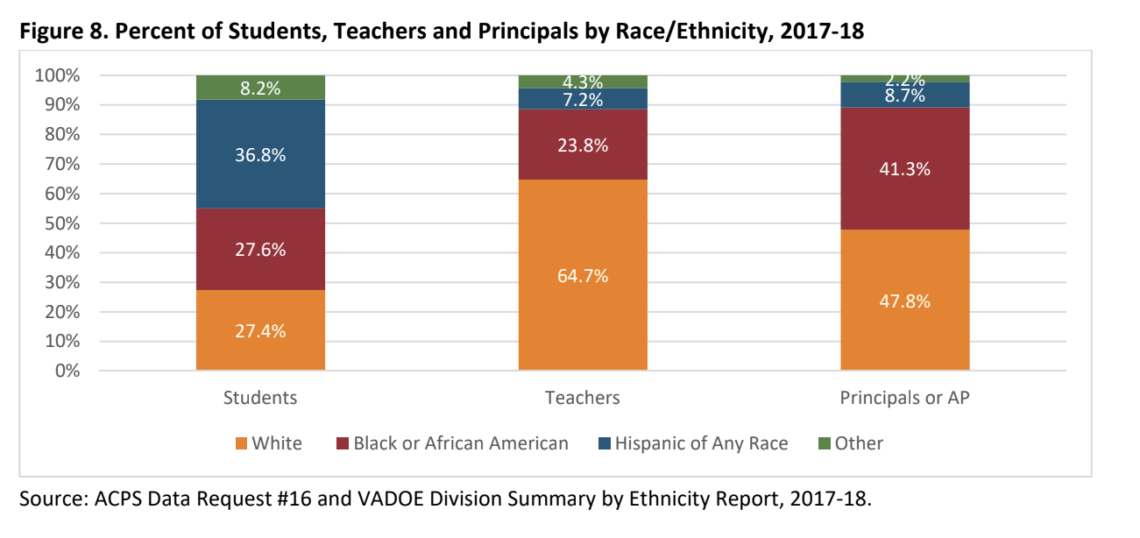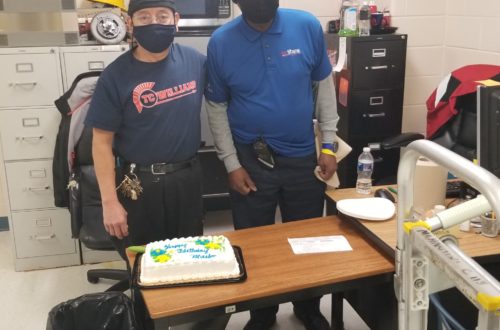The school district has had more success recruiting Black teachers than it has Hispanic teachers.
Nikki Harris
Hispanic students represent 36.9 percent of the total student population in ACPS, as of 2020. But according to the 2017-2018 report from the School Board, only 7.2 percent of the teachers at ACPS are Hispanic.
This contrast reflects a nationwide trend of Hispanic teachers being underrepresented in schools: Only 7.8 percent of the nationwide teaching field is Hispanic, while Hispanic students represent around a quarter of the country’s student population in public schools, according to a 2015 report from the Education Department.
(ACPS employees are not required to self-identify their race/ethnicity, and they are allowed to self-identify as multiple races/ethnicities.)
ACPS has taken a number of steps to increase the number of Hispanic students at ACPS, according to Sandra Hardeman, ACPS Director of Recruitment and Retention. “The main source of this [shortage of Hispanic and minority teachers] is because of the teacher-supply pipeline — there are fewer minority students entering into college … and those that do go into other career paths because there is such a demand.”
The 2015 report on the shortage of Hispanic teachers said that the “costly and timely” process of becoming a teacher often stops Hispanics from pursuing teaching, as it (at least apparently) offers a lower return on investment than other professions.
Teachers of color, particularly Black teachers, tend to have a large effect on students of the same racial identity. When Black children had a Black teacher between third and fifth grade, they were more likely to attend college, according to a 2017 study conducted by American University.
The gap between the number of Black students and Black teachers at ACPS is much narrower than the gap between Hispanic teachers and students. 25.8 percent of students at ACPS are Black as of 2020, while 23.8 percent of teachers at ACPS are Black as of 2017-2018.
In contrast, only nine percent of teachers in the nationwide teaching force are Black, while 15 percent of students in US public schools are Black.
Hardeman said that the diversity recruitment process at ACPS does not involve “delineating” for teachers of specific races, but is rather focused on reaching a “broad array of candidates that we hope would pull in more Hispanic teachers.”
“We try to create a diverse, welcoming environment” when interviewing teaching candidates, Hardeman said, “to gauge their interests in teaching for us, not just for racial diversity but also to recruit men, because there is also a male shortage of teachers.”
The number of White teachers in ACPS is over double that of White students: 64.7 percent of teachers are White, while only 27.4 percent of students are White.





